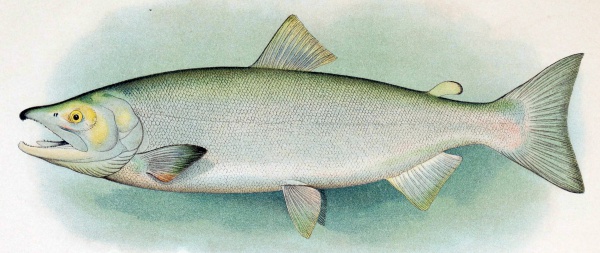Facts About Sockeye salmon
Sockeye salmon, also known as red salmon, kokanee salmon, or blueback salmon, are captivating fish inhabiting the Northern Pacific Ocean and its adjacent rivers. These vibrant creatures are renowned for their striking red hue during the spawning season. They can attain a length of up to 84 cm and weigh between 2.3 to 7 kg.
What makes sockeye salmon particularly intriguing is their extensive migratory journey. They traverse great distances, migrating from freshwater to the ocean and back. Some, referred to as kokanee, spend their entire lives in freshwater lakes. Their diet predominantly consists of small organisms called zooplankton. After spawning, they die—a trait known as semelparity.
The name "sockeye" derives from the Halkomelem word "sθə́qəy̓" meaning "red fish." While in the ocean, these salmon are easily recognizable by their silver-blue color, which transforms into a brilliant red during spawning. They possess long, serrated gill rakers and, unlike some other salmon species, lack spots on their tails.
Sockeye salmon can be found from the Columbia River up to Hokkaido, Japan. Some populations inhabit landlocked lakes, resulting in smaller kokanee salmon compared to their ocean-going counterparts. These kokanee are distributed across various regions in Canada and the United States.
The life cycle of a sockeye salmon is truly remarkable. Starting in freshwater, they migrate to the ocean as juveniles and eventually return to their birthplace to spawn. The reproductive behaviors and strategies of males and females differ, influenced by both sexual and natural selection.
However, sockeye salmon face significant conservation challenges. In certain areas of the United States and Canada, their populations are listed as endangered or threatened. While Alaska remains a major hub for commercial sockeye salmon fishing, ongoing efforts aim to protect and monitor wild populations, especially as productivity declines in some regions.
